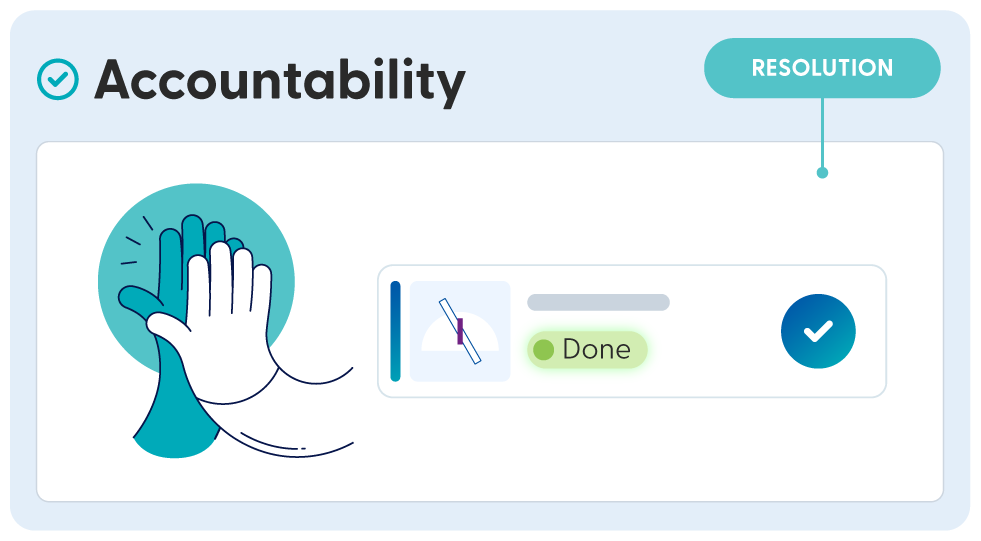Vous devez activer les cookies pour accéder à ce site.


Where communication fails, stakeholder relationships erode. Not only is time wasted, but, when someone builds from bad information, mistakes are bound to happen. These mistakes are costly for everyone.
How can you build trusted relationships with your clients and extended team? The simplest approach is by organizing project information in a way that every stakeholder is happy with, making sure the right people get what they need, when they need it, which guarantees a smooth flow throughout a project’s lifecycle.
In short, it’s all about having a project information strategy.
One of the easiest ways to build trust with your stakeholders is by organizing your project information in a way that doesn’t force you to rely on just one person to be the hub for all communication.
The key is to adopt a strategy that includes the principles of Project Information Management (PIM), so that your data is accessible by everyone and searchable, no matter where it is.
Let’s take the example of Joe, the lead architect for your project. He’s the center of everything. He’s the hub.
He’s the go-to guy. And he’s great to work with, but…
Only Joe has access to all this project communication. That means everyone is trying to coordinate with him; all the project communication goes through him. But if Joe is taking a few days off, or moves to another position, good luck getting to that data!
Joe works with a lot of different applications and databases, such as Autodesk BIM360, Microsoft Sharepoint and Outlook… it’s hard to make a complete list, but Joe knows where everything is stored. But do you? Does the rest of your team? Can you access it as easily as Joe?
And to make matters worse, the client may come back months or years after the project is over and done, looking for details on why a decision was taken here, or a choice made there.
It’s up to Joe to remember where he kept that information, all while he juggles his current projects… assuming he still works with you and hasn’t moved on to another position. So now what?
One of the core elements of PIM as a strategy is its approach to organization: it’s all about connecting you and your stakeholders to your data without altering the daily tools you use. And the good news is that you don’t have to dump all of your data on a single platform. You can connect your project information wherever it happens to live.
Once you connect all that data, you can easily search it.
Even if Joe is away, your team’s workflow and your stakeholders’ questions can still be answered easily. This reduces frustration and billable hours, and leads to better relationships all around. The truth is that the construction industry needs this kind of approach to data accessibility and organization!
You better manage your files, emails, and action items so that you can search everything – all at once – to get what you need.
Stakeholder relationships depend on everyone doing their part on the project. As a baseline, we ought to trust everyone we work with to want the project to succeed.
Conflicts between stakeholders can arise when there are unforeseen delays: tensions rise as billable hours tick by without progress – maybe because one of the contractors is waiting on a submittal to resolve, or one engineering team assumed that a particular clash was going to be handled by a different engineering team, and so it remains unresolved – and now blame is getting thrown around like confetti.
So, what you need is a way to ensure that everyone knows what they’re supposed to do and when.
Before your team begins a new project, you should decide which channels will be used to communicate all project-specific information. That way, your stakeholders know ahead of time where they are expected to send and receive updates, and everyone is on the same page.
Many project managers use a project-specific code for all emails, so that they can be easily tracked throughout and after the project. It requires some diligence, but sorting your email into project-specific folders will greatly reduce complications down the line. However, if this process is automated through a PIM platform that has a great search capability [add link to Search product page], the need for these arcane codes goes away.
Many of our colleagues in the AECO space try to keep their daily “to-do” tasks in their own way: some use email and calendar reminders, some use shared spreadsheets, some use action item logs…
But AECO projects require so much interdependency between teams, but it’s hard to see what’s going on outside of your four walls. So tasks can get done by one team, and until the weekly meeting comes around, it’s unlikely that everyone will know it’s been accomplished (and we all know that those meetings are long enough already!).
So the best ways to solve this problem include:
If everyone is managing off the same list, knows who’s responsible for what and when, and can see the most up-to-date status, then trust and accountability are much easier to maintain.
If you and your team are being made aware of updates immediately, you can be sure that when the ball’s in your court you won’t make unforced errors.
If your team can comment back and forth on action items directly in their everyday software – and anyone can view the action item details – then you can avoid the slow pace of traditional email communication while maintaining an easier project record.
Let’s face it, your meetings are too damn long.
When your project team sits in long meetings, they’re not getting their work done. It’s frustrating for everyone. Long meetings not only waste time, they impact your team’s cooperation, interest, and trust.
We waste a lot of time in meetings when team members are not up to speed on the status of action items. On one hand, we assume that’s why we hold these meetings in the first place: to update everyone on what we’ve been doing. But on the other hand, it takes forever to go through these detailed updates, and people’s attention spans only last so long.
Meetings need to include those involved in a particular aspect of the project. It might sound like a good idea for maintaining stakeholder relationships to include other people, so they can stay informed and connected with the wider team. But more people means more voices, longer explanations and justifications, and ultimately more time spent for everyone.
Wouldn’t it be so much easier if you could focus everyone on only the big-ticket items? How much time could you save? How many billable hours? How can you make that happen?
Especially at the beginning of projects, it’s unavoidable that meetings will last a long time. But, as the project advances, if you want to keep your meetings to the 60-minute sweet spot, you should stick with the most important points.
One of the lessons of Building Information Modeling (BIM) over the past decade has been the adoption of action item lists that improve coordination between otherwise siloed stakeholders. When everyone is working off the same list, and receiving real-time updates as items are resolved, these then don’t need to be brought up in weekly meetings.
In this way, only the most important concerns can be addressed in your meetings, keeping everyone focused on what matters, and keeping your meeting times as short as possible.
Managing the human element of coordination remains one of the greatest challenges for construction projects. So by ensuring that every stakeholder has bought in to how information will be shared in the project, you can ensure smoother collaboration.
Under the umbrella of Building Information Modelling (BIM) lays one of the best approaches to getting everyone onboard with a project. And while open collaboration can resemble a flat hierarchy, this part typically benefits from a top-down approach.
One of the easiest ways to secure good relationships between stakeholders at the start of a project is by having an inclusive tech stack that allows each stakeholder group to work with the software they’re most comfortable.
Leveraging Project Information Platforms like Newforma Konekt, which boast a wide ecosystem of integrations and connectors like Procore or Autodesk helps make buy-in that much easier for all involved.
The project owner usually has the biggest buy-in, as they’re the one commissioning it. They also bear the weighty burden of responsibility for ensuring overall project outcomes, so anything which presents extra cost or time can be a concern.
Good relationships between stakeholders makes for successful projects, and those relationships improve when expectations are communicated early through an Execution Plan, which the project owner can help oversee.
Building Information Modelling is a process that saves a lot of time and money if properly implemented because it is designed to enhance coordination, reduce re-work, avoid mistakes, and keep the flow of the project consistent. When BIM is combined with a PIM strategy, it amplifies the power of collaboration that previous generations of AEC projects could only dream of.
With regards to your relationship management between stakeholders, your PIM Plan should clearly define:
Construction has been around forever, but BIM has really only been on the AECO scene since about the 2010s, since computer modeling had become powerful enough to manage it. So for some stakeholders, BIM will be new to them; and where there’s novelty, there can sometimes be resistance.
One way to improve relationships with reticent stakeholders is to inspire select members within different teams to act as champions for this new approach of cross-team coordination. They can then advocate for it, and you’re more likely to keep teams on board over the long run of the project.
Most importantly, don’t write off more mature AECO professionals as being BIM coordination-phobic. It’s important to include all players in the coordination process, especially your most experienced players. If you can communicate clearly what the benefits of cross-team communication are and provide some resources, even the most set-in-their-ways AEC professional can be your most vocal champion.
Trusted By
BIM
Information Management
Discover how Newforma is conquering BIM issue management and clash resolution, enhancing communication for better project outcomes.
Read post


